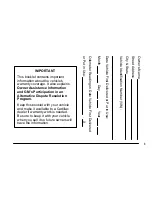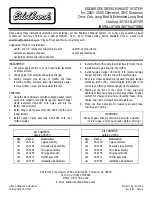
87
2. Remove spring 5 and control valve spool 1, put the dummy plug
into its place, which will prevent oil outflow.
3. Unscrew safety valve seat 6, remove ball 4, guide 3 and spring 2.
Remove ring 8 and filter 7 from the safety valve seat.
4. Wash the parts and blow them with pressed air.
5. Reassemble the valves in the reverse sequence. keep clean while
reassembling. In order to keep the adjustment of the safety valve while
disassembling and reassembling do not change the number of adjusting
shims 11.
Fig. 9.27. Pump Control
and Safety Valves:
1 — control valve spool; 2 — safety
valve spring; 3 — safety valve spring
guide; 4 — safety valve ball; 5 — spool
spring; 6 — safety valve seat; 7 — filter;
8 — ring; 9 — dummy plug; 10 —
sealing gasket; 11 — adjusting shims
Brake Systems
ATTENTION!
Please remember that the stopped engine and the
disabled vacuum booster considerably increase the effort necessary
for pushing the brake pedal to stop the vehicle.
ATTENTION!
If one of the brake circuits is broken, the pedal
travel is increased and breaking efficiency is decreased. In this case do
not do short-time multiple pedal pushes, instead push the pedal until
the maximum breaking.
If the brake system does not work properly, it is forbidden to drive
the vehicle or to tow it with a tow-rope. In this case use two wheel
towing or tow truck service.
ATTENTION!
Brake fluid is poisonous. Keep it in a tightly closed
container. While working with it follow these rules:
-
avoid any mouth contact with the fluid;
-
do not let the fluid dry out on the skin; wash it off with soap and
warm water immediately;
-
flush the spilled fluid with water, ventilate the room;
















































